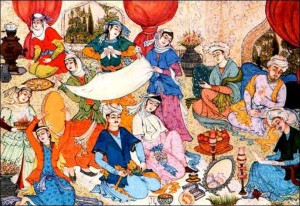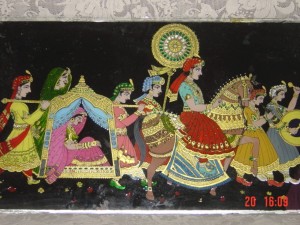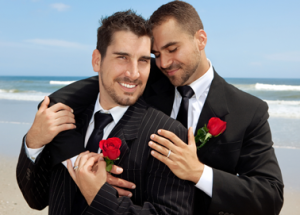Since the ancient world, marriage has evolved from a preservation of power to a personal contract between two equals seeking love, stability, and happiness.
Actually, the institution has been in a process of constant evolution. Pair-bonding began in the Stone Age as a way of organizing and controlling sexual conduct and providing a stable structure for child-rearing and the tasks of daily life. But that basic concept has taken many forms across different cultures and eras. “Whenever people talk about traditional marriage or traditional families, historians throw up their hands,” said Steven Mintz, a history professor at Columbia University.
“We say, ‘When and where?'” The ancient Hebrews, for instance, engaged in polygamy — according to the Bible, King Solomon had 700 wives and 300 concubines — and men have taken multiple wives in cultures throughout the world, including China, Africa, and among American Mormons in the 19th century. Polygamy is still common across much of the Muslim world. The idea of marriage as a sexually exclusive, romantic union between one man and one woman is a relatively recent development. Until two centuries ago, said Harvard historian Nancy Cott, “monogamous households were a tiny, tiny portion” of the world population, found in “just Western Europe and little settlements in North America.”
When did people start marrying?
The first recorded evidence of marriage contracts and ceremonies dates to 4,000 years ago, in Mesopotamia. In the ancient world, marriage served primarily as a means of preserving power, with kings and other members of the ruling class marrying off daughters to forge alliances, acquire land, and produce legitimate heirs. Even in the lower classes, women had little say over whom they married. The purpose of marriage was the production of heirs, as implied by the Latin word matrimonium, which is derived from mater (mother).
When did the church/Temple get involved?
In ancient Rome, marriage was a civil affair governed by imperial law. But when the empire collapsed, in the 5th century, church courts took over and elevated marriage to a holy union. As the church’s power grew through the Middle Ages, so did its influence over marriage. In 1215, marriage was declared one of the church’s seven sacraments, alongside rites like baptism and penance. But it was only in the 16th century that the church decreed that weddings be performed in public, by a priest, and before witnesses.
What role did love play?
For most of human history, almost none at all. Marriage was considered too serious a matter to be based on such a fragile emotion. “If love could grow out of it, that was wonderful,” said Stephanie Coontz, author of Marriage, a History. “But that was gravy.” In fact, love and marriage were once widely regarded as incompatible with one another. But in modern age love plays a very important role in marriages.
When did romance enter the picture?
In the 17th and 18th centuries, when Enlightenment thinkers pioneered the idea that life was about the pursuit of happiness. They advocated marrying for love rather than wealth or status. This trend was augmented by the Industrial Revolution and the growth of the middle class in the 19th century, which enabled young men to select a spouse and pay for a wedding, regardless of parental approval. As people took more control of their love lives, they began to demand the right to end unhappy unions. Divorce became much more commonplace.
Did marriage change in the 20th century?
Dramatically. For thousands of years, law and custom enforced the subordination of wives to husbands. But as the women’s-rights movement gained strength in the late 19th and 20th centuries, wives slowly began to insist on being regarded as their husbands’ equals, rather than their property. “By 1970,” said Marilyn Yalom, author of A History of the Wife, “marriage law had become gender-neutral in Western democracy.” At the same time, the rise of effective contraception fundamentally transformed marriage: Couples could choose how many children to have, and even to have no children at all. If they were unhappy with each other, they could divorce — and nearly half of all couples did.
Marriage had become primarily a personal contract between two equals seeking love, stability, and happiness. This new definition opened the door to gays and lesbians claiming a right to be married, too. “We now fit under the Western philosophy of marriage,” said E.J. Graff, a lesbian and the author of What Is Marriage For? In one very real sense, Coontz says, opponents of gay marriage are correct when they say traditional marriage has been undermined. “But, for better and for worse, traditional marriage has already been destroyed,” she says, “and the process began long before anyone even dreamed of legalizing same-sex marriage.”
Gay ‘marriage’ in medieval Europe
Same-sex unions aren’t a recent invention. Until the 13th century, male-bonding ceremonies were common in churches across the Mediterranean. Apart from the couples’ gender, these events were almost indistinguishable from other marriages of the era. Twelfth-century liturgies for same-sex unions — also known as “spiritual brotherhoods” — included the recital of marriage prayers, the joining of hands at the altar, and a ceremonial kiss. Some historians believe these unions were merely a way to seal alliances and business deals.
Reference : http://theweek.com/article/index/228541/how-marriage-has-changed-over-centuries
